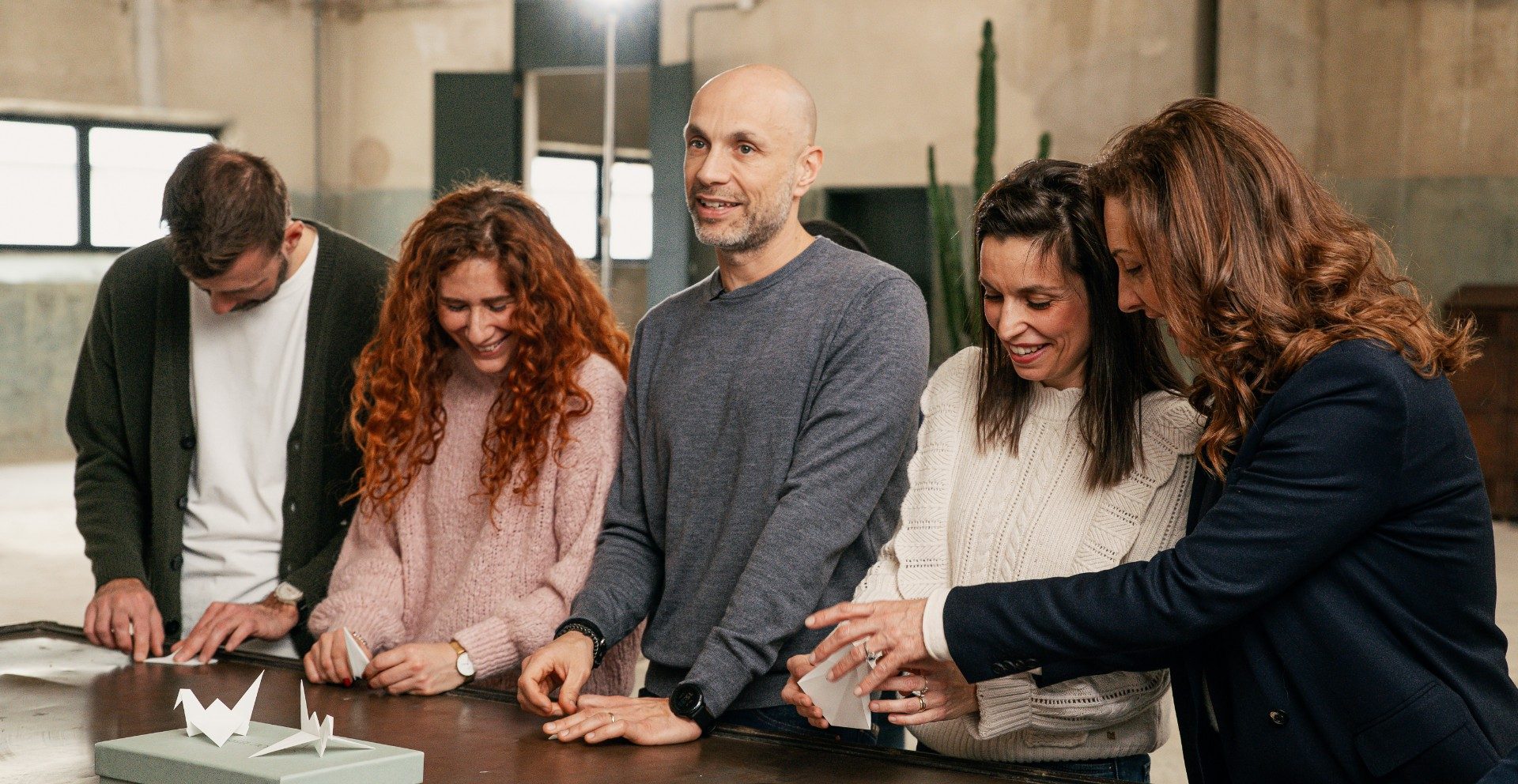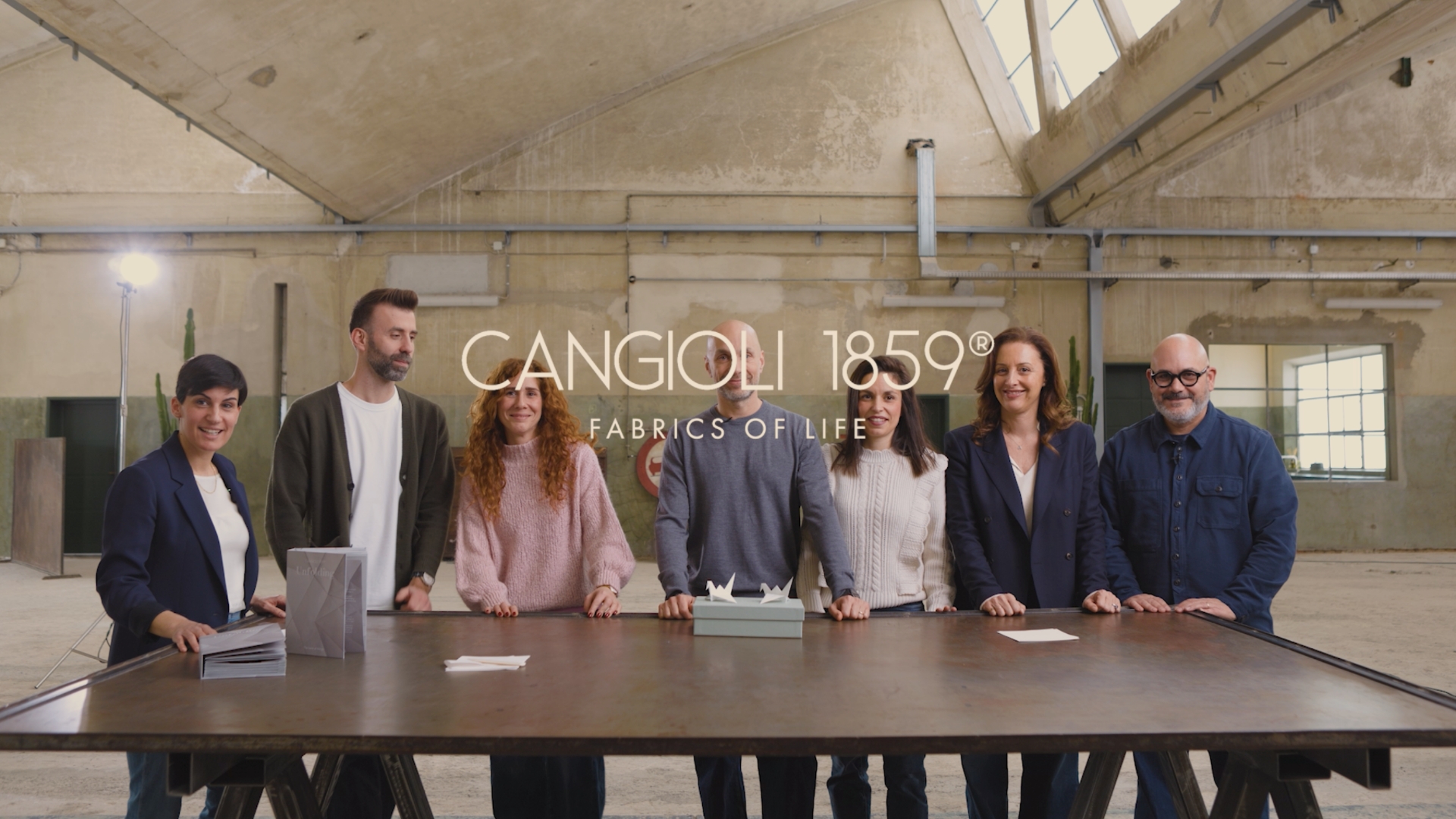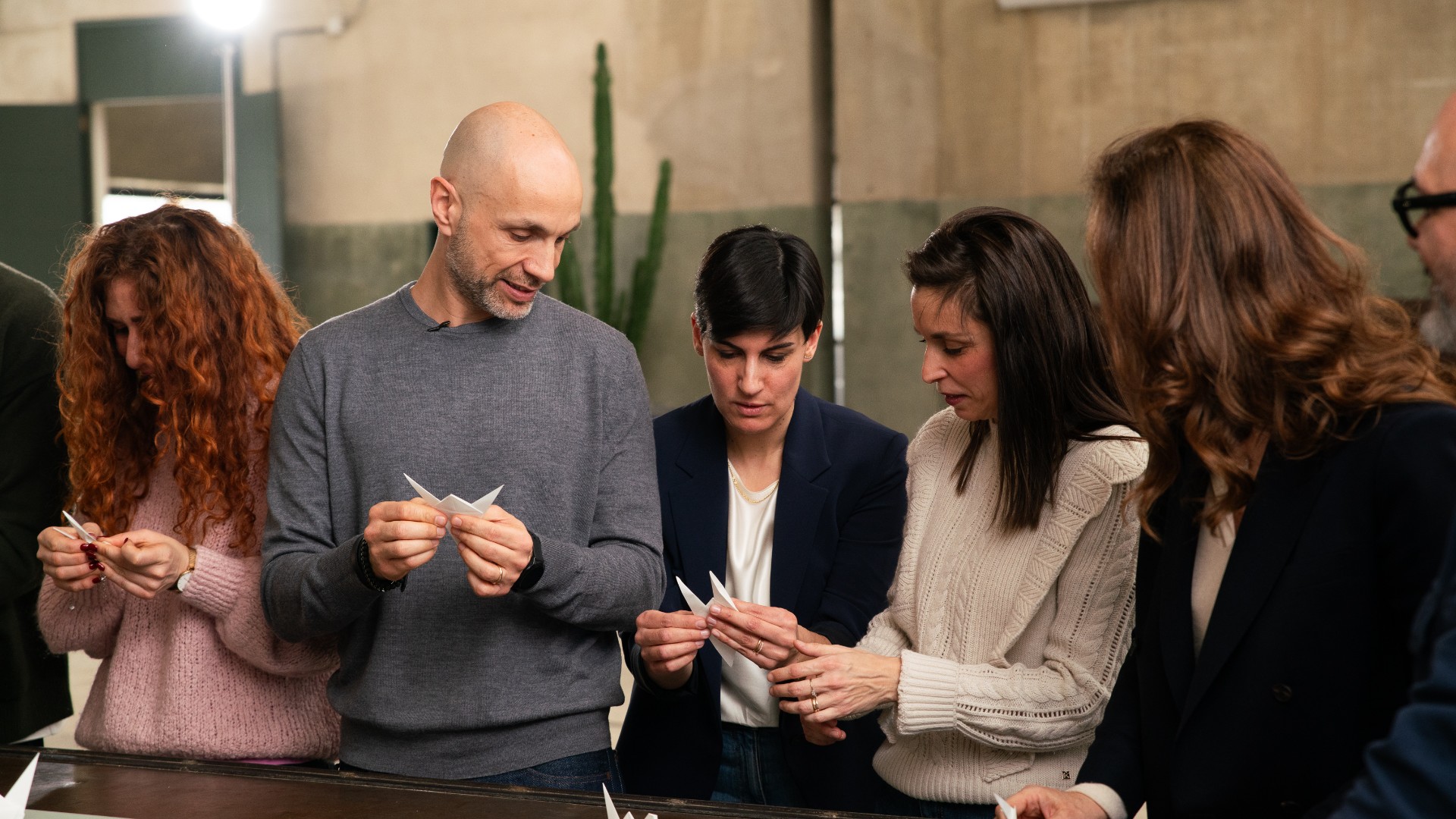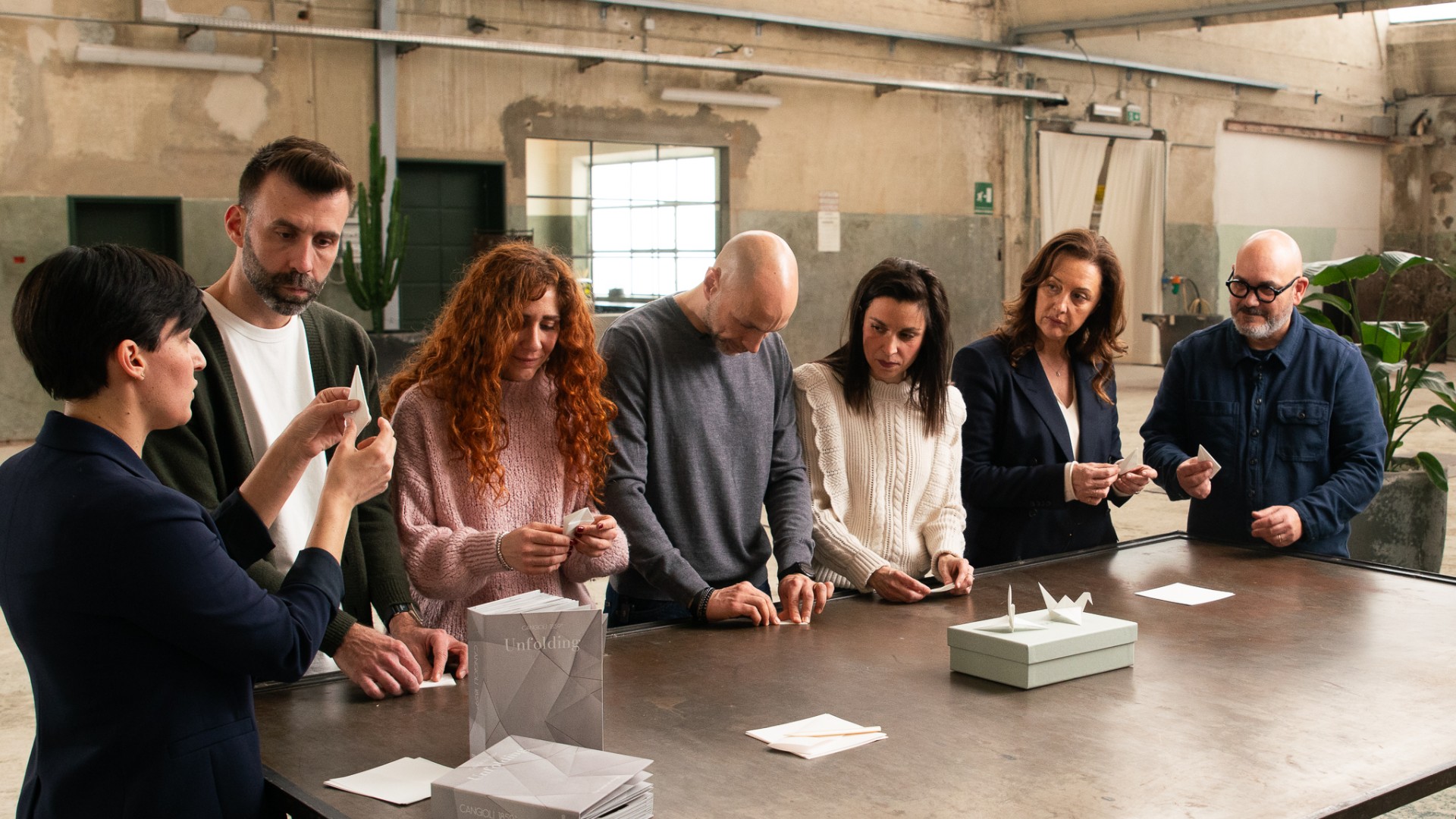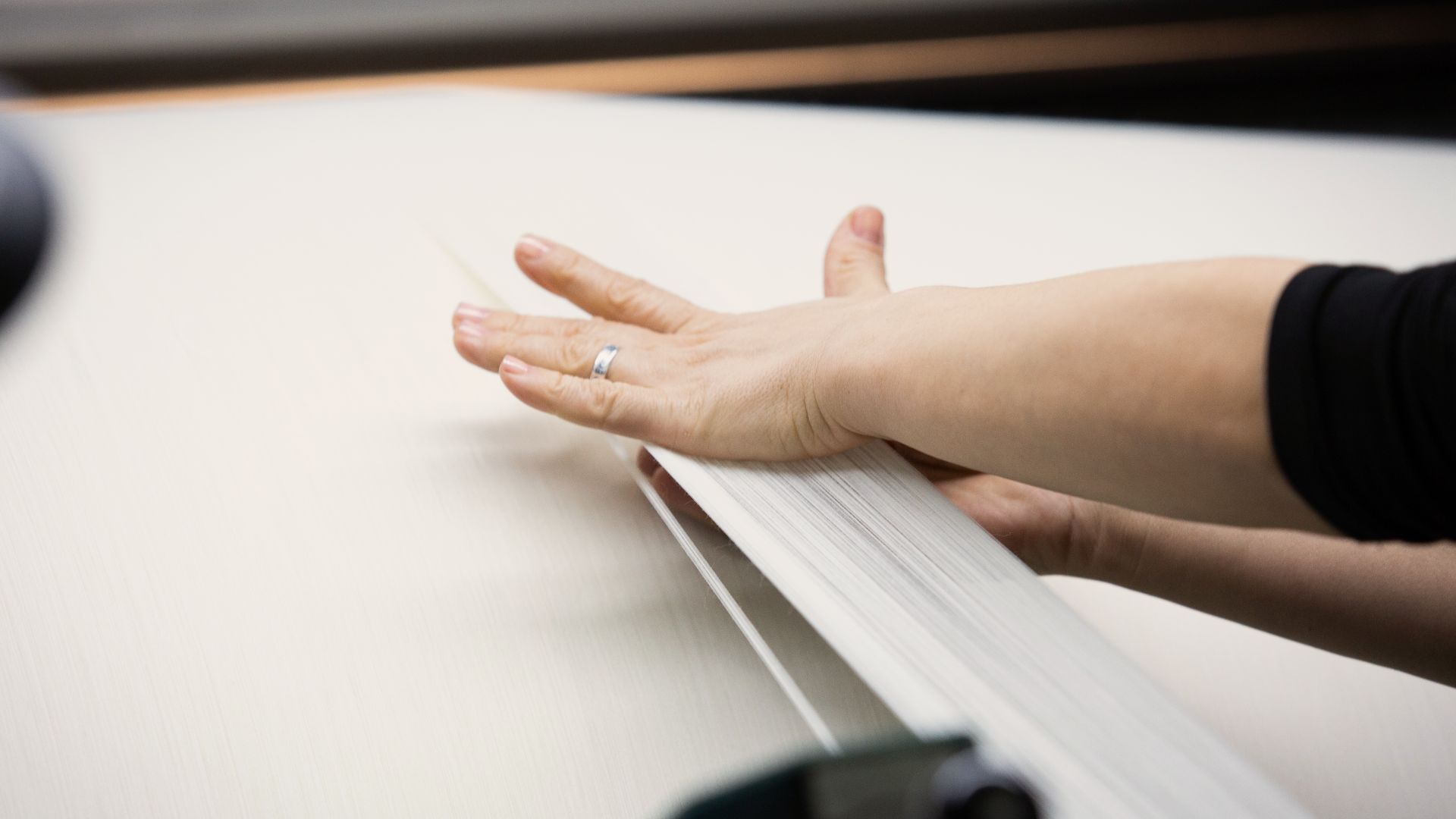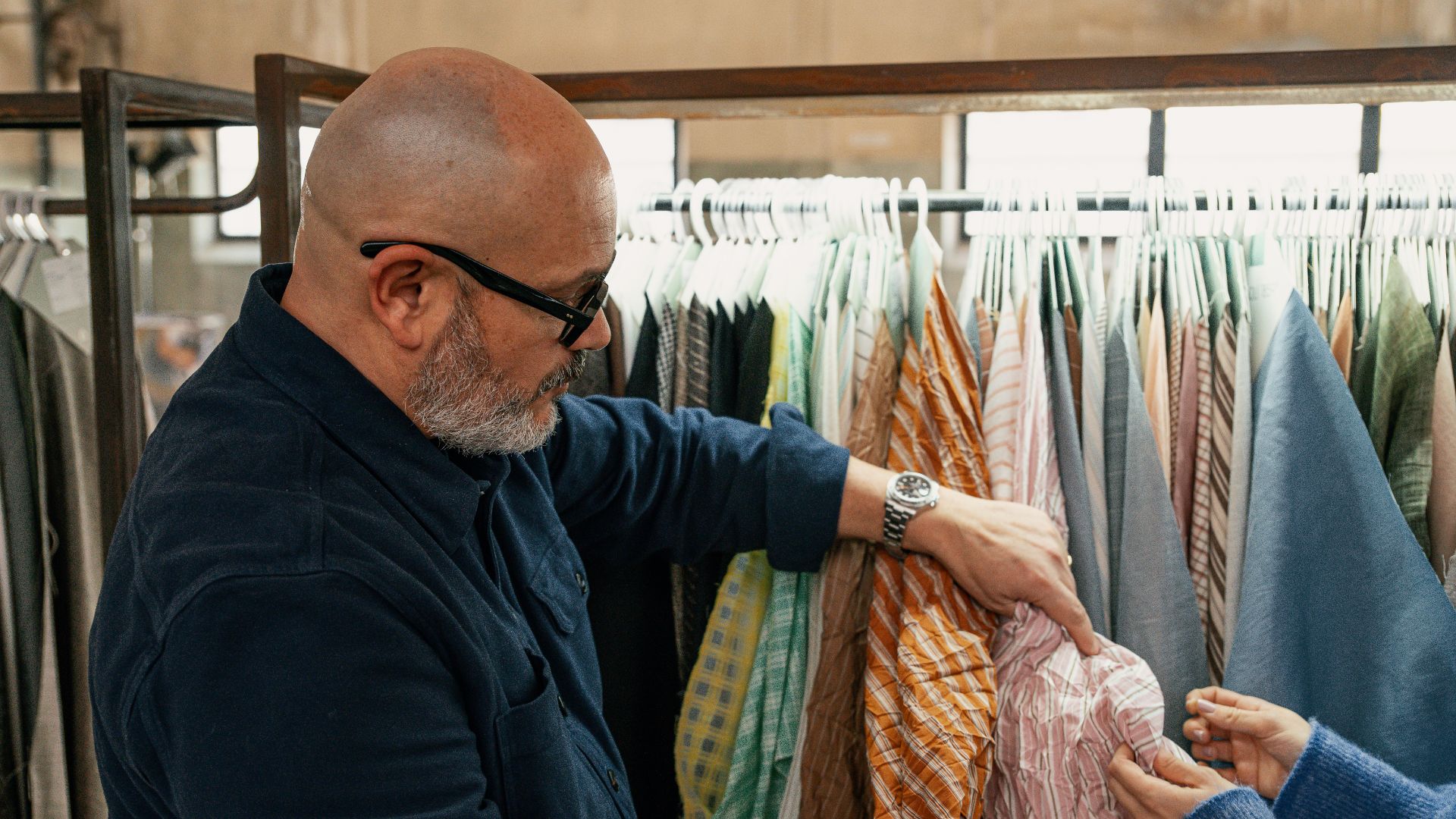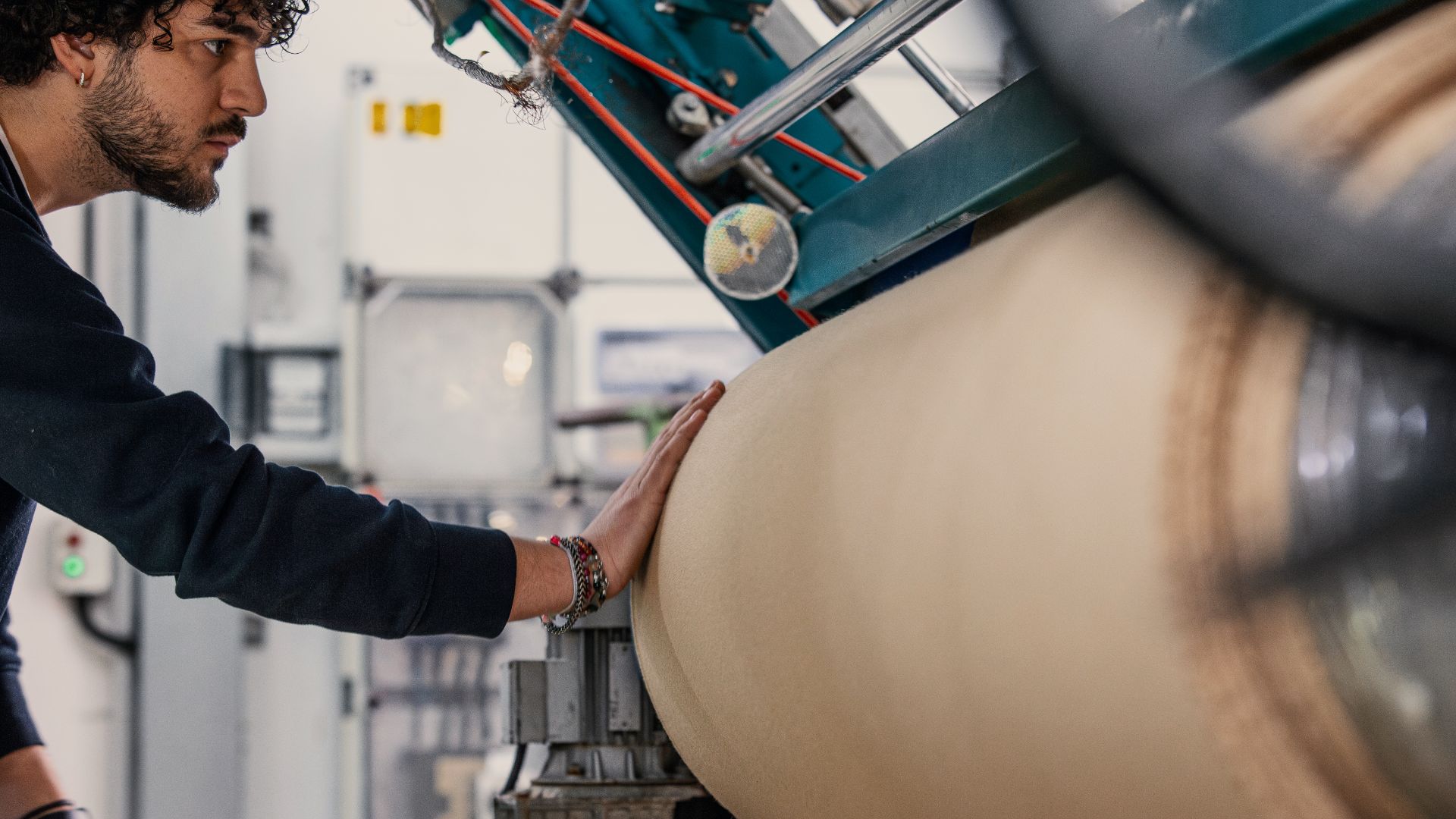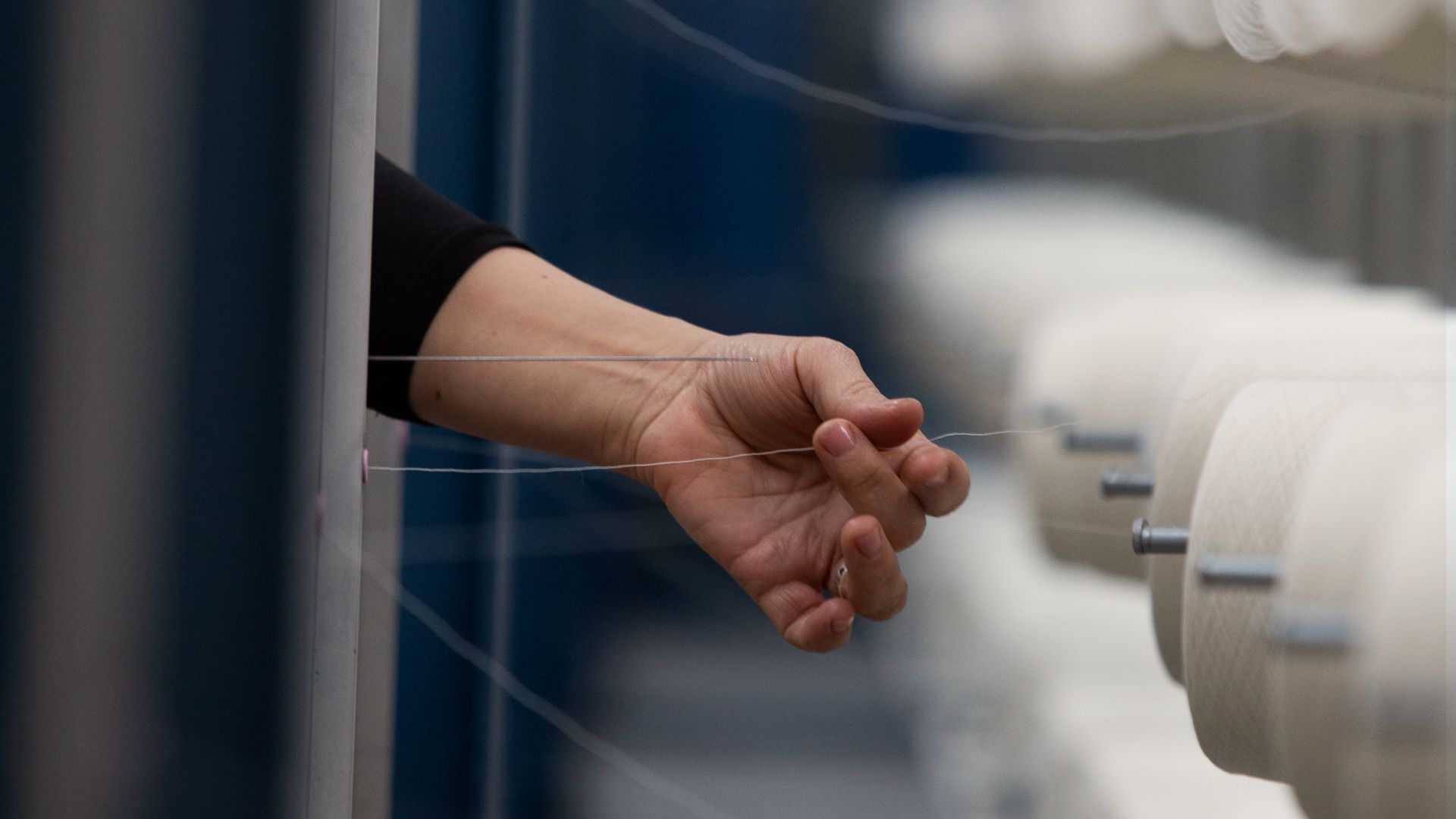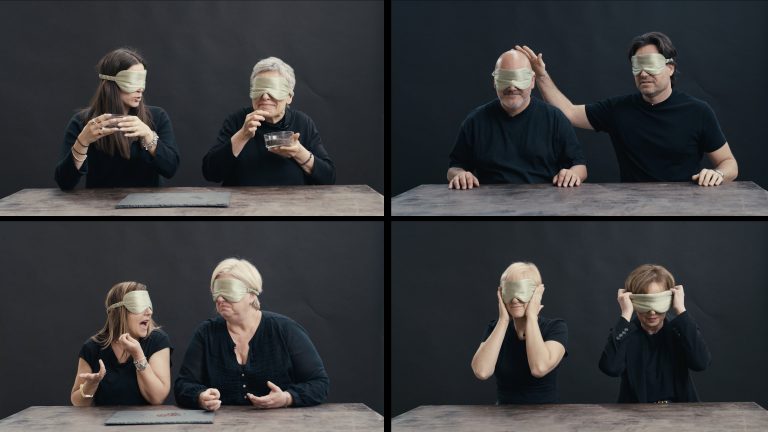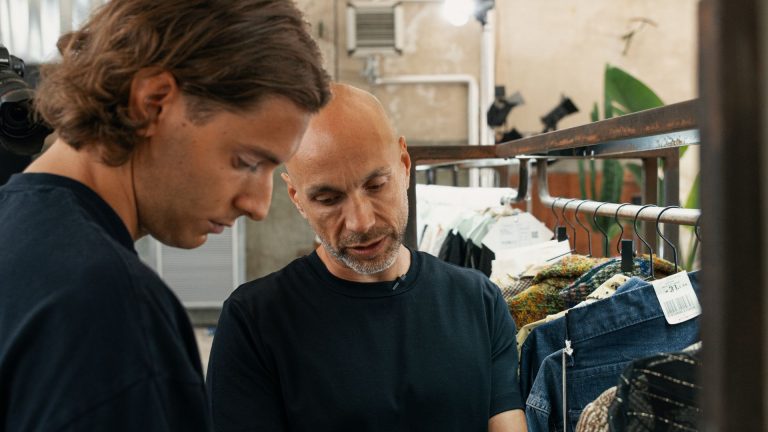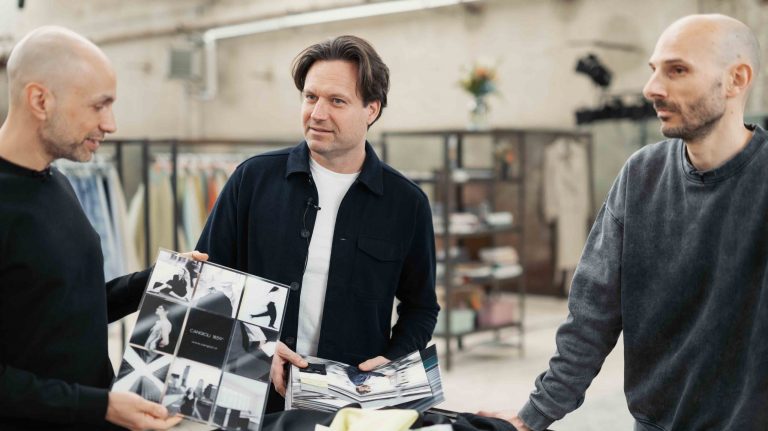What was the inspiration behind the SS26 Collection?
This season, our exchange with Silvia, an origami artist, sparked an unexpected dialogue between two worlds—seemingly distant yet profoundly connected. Her approach to origami art, rooted in precision, gradual transformation, and intent, revealed striking parallels with the way we conceive and create fabric.
We had a chat with Saimon—Technical Designer at Cangioli 1859—and Silvia—founder of Carta Verde Menta—exploring the interplay between origami and textiles crafting, between artisanal gesture and the meticulous method.
Watch the full video interview!
The creative process
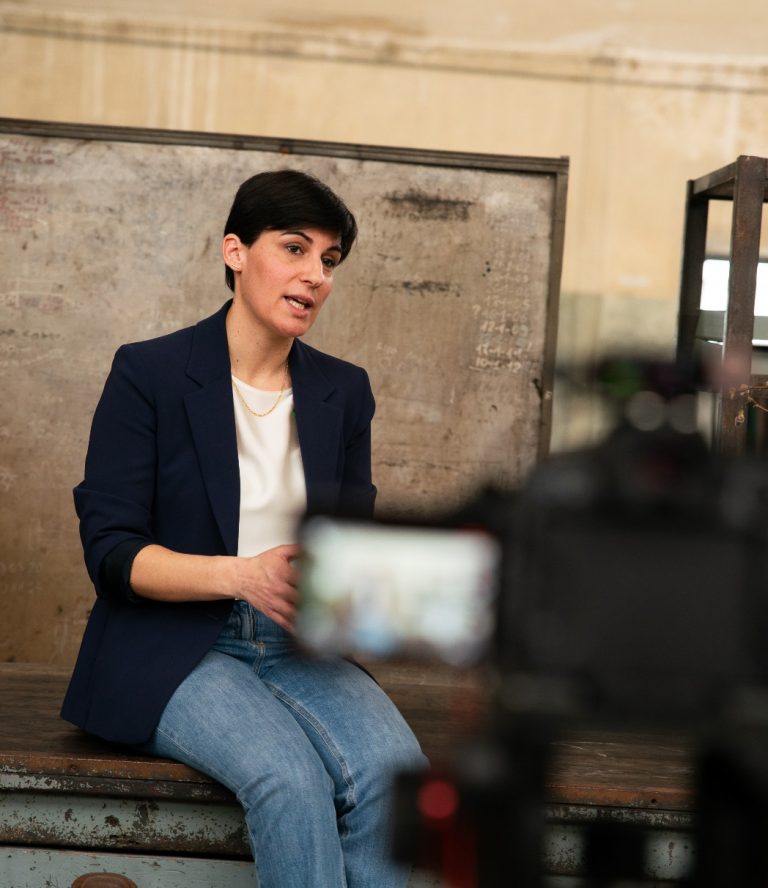
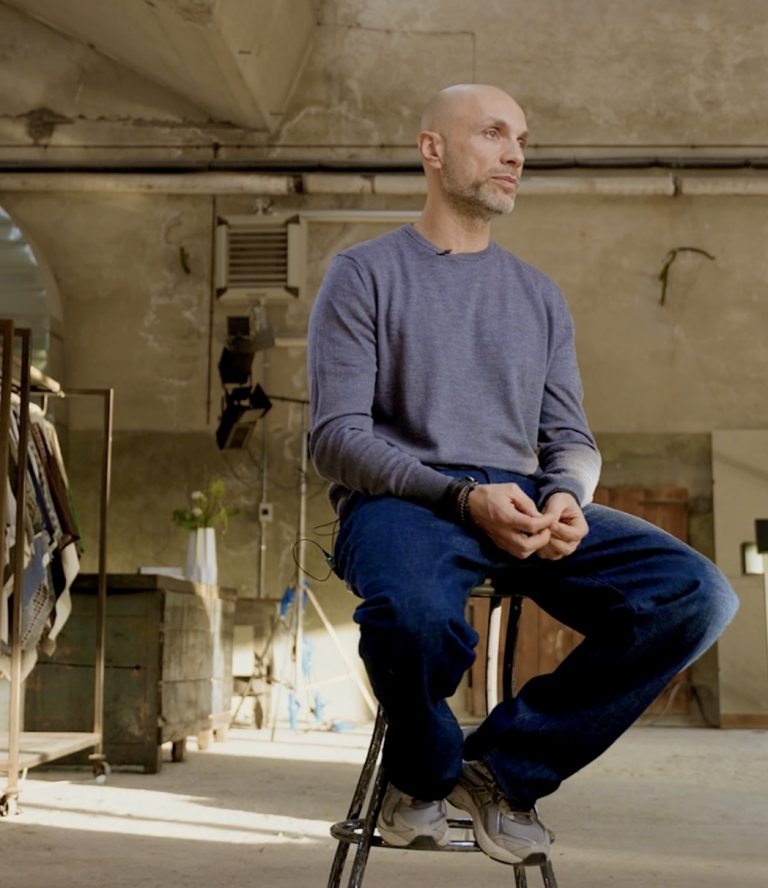
The Interconnection between every stage
Silvia: Origami is the art of folding paper to create a three-dimensional shape, ranging from simple to complex, starting from a plain, flat sheet. It is a process of transformation: the material moves from a formless, meaningless state to a creation that, by taking shape, gains value and significance.
Saimon: In our discussion with Silvia, we realized how much we have in common. We found many similarities with our production process. Every fabric is born from a fully vertical process, where each phase is part of a perfectly synchronized mechanism that guides the raw material’s evolution into a refined textile.
A shared starting point
Silvia: When you start folding an origami, the first folds are later undone, leaving a crease in the paper. These central traces are used to build the “base shape.” Only by starting from this initial structure and adding more specific and complex folds, can you achieve a particular origami and not another.
Saimon: In our process, we can say that the “base shape” corresponds to the warp. It’s the starting point from which every project begins. From there, the entire journey unfolds, and every application, every choice, and every treatment leads to infinite results and variations.
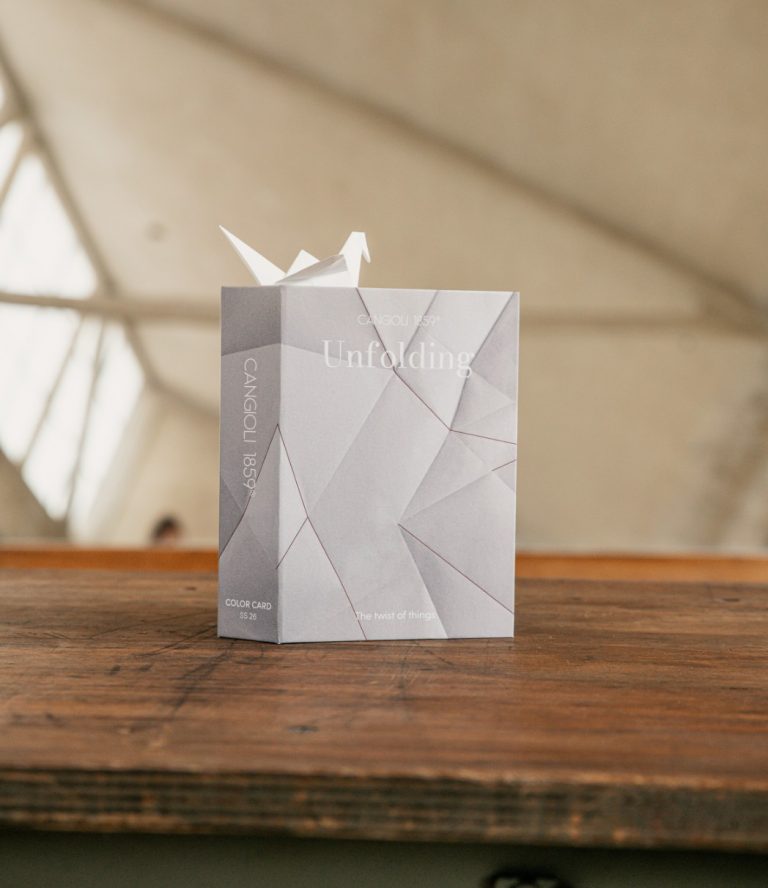
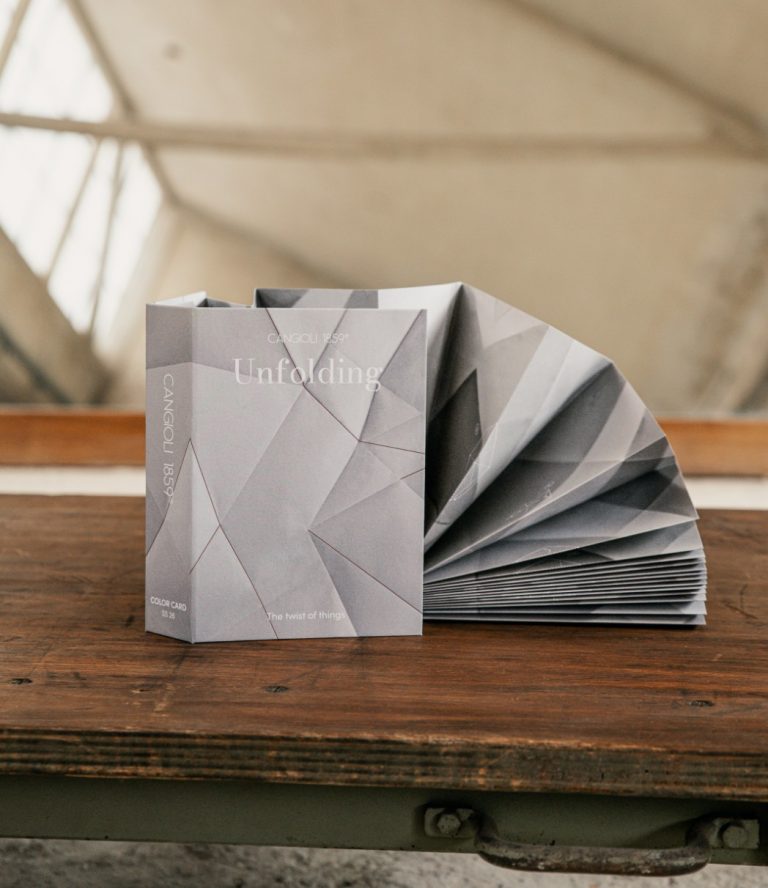
The role of craftsmanship and time
“Craftsmanship is that something that can transform a simple weave of threads into a unique fabric.”
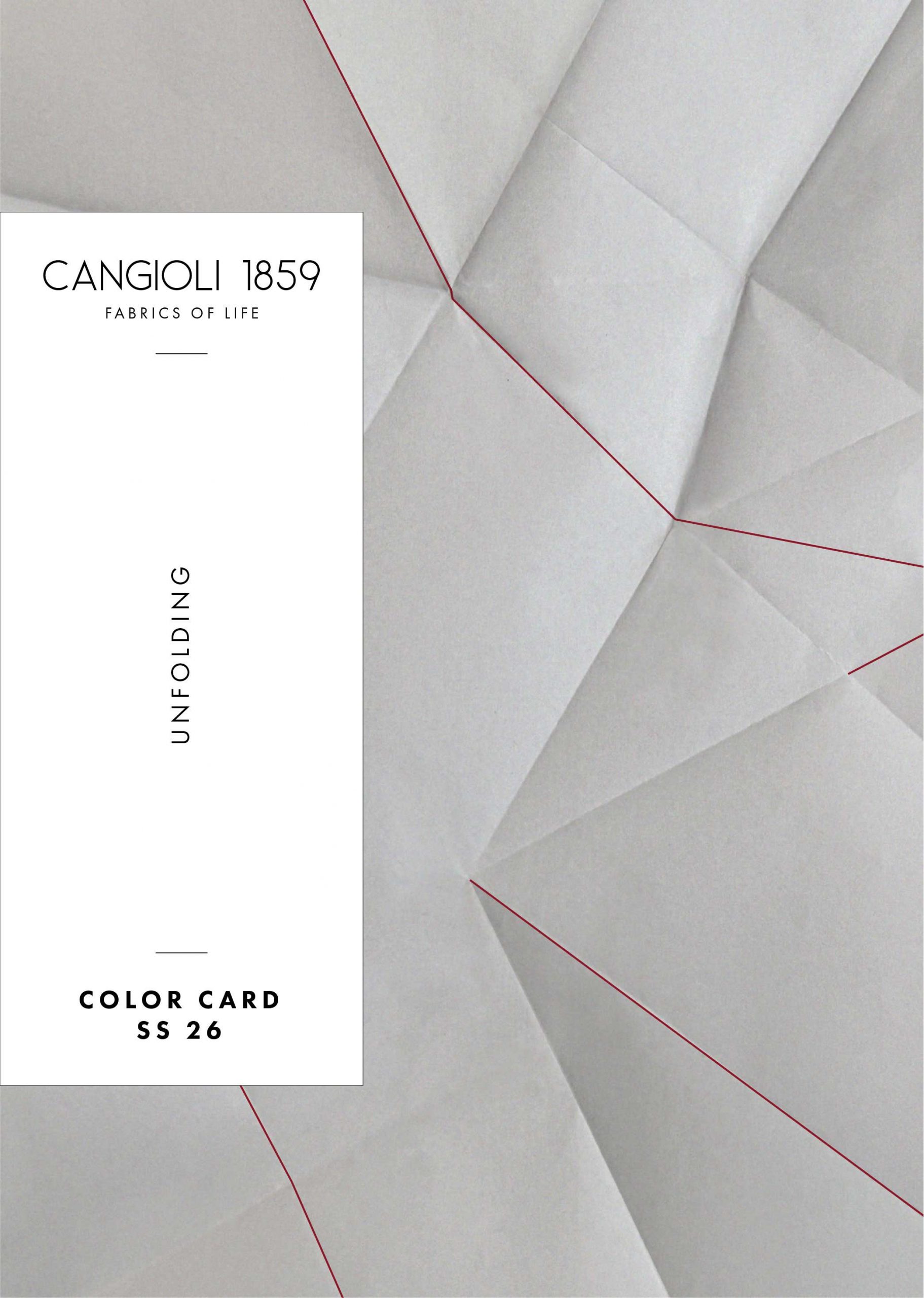
Unfolding
Unfolding si ispira alla meticolosa arte dell’origami, in cui ogni step è essenziale e ogni piega è una scelta deliberata che contribuisce alla creazione finale.


